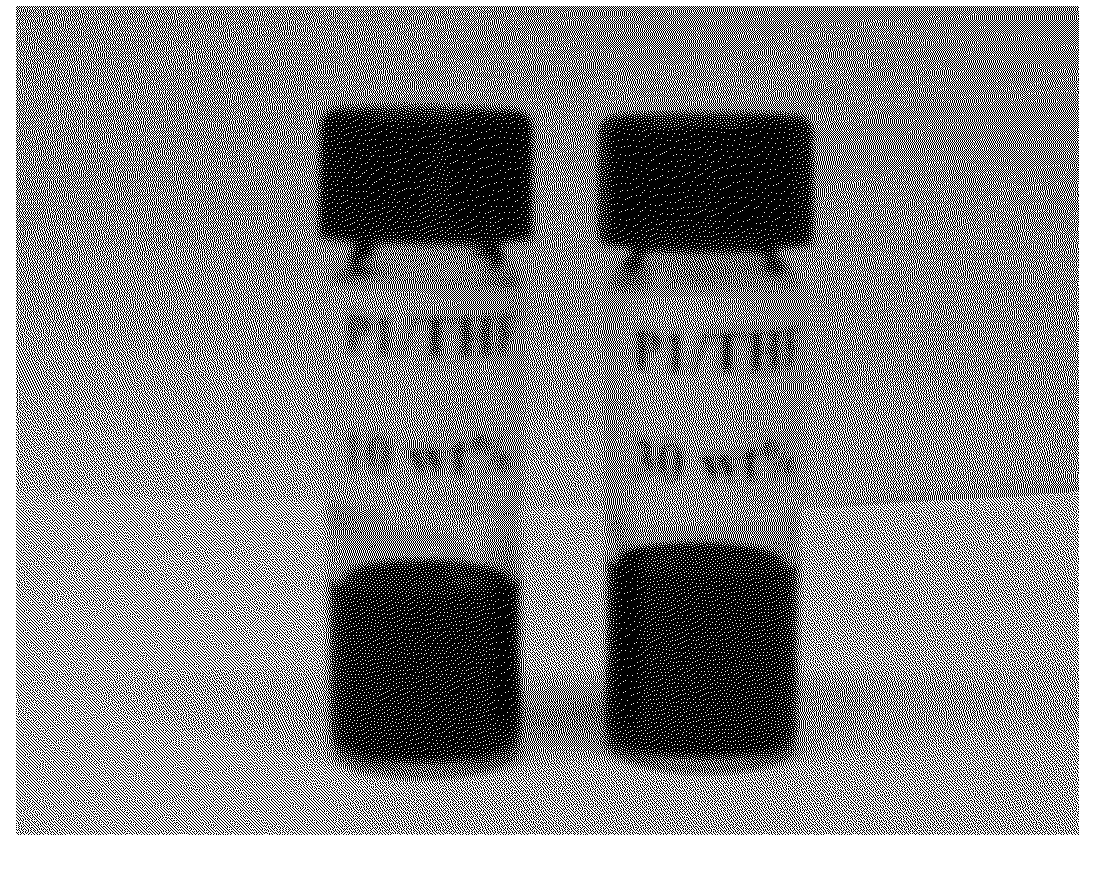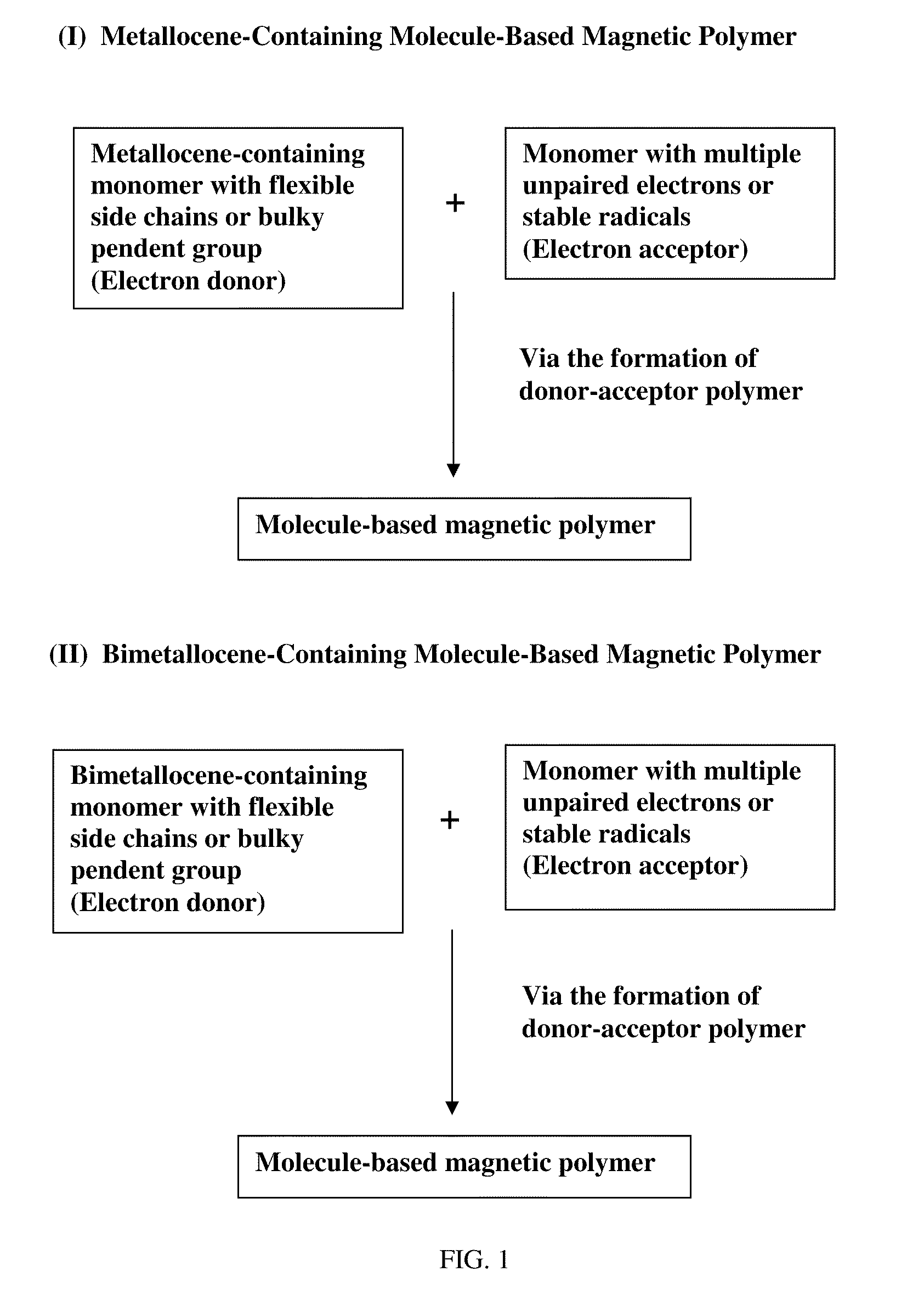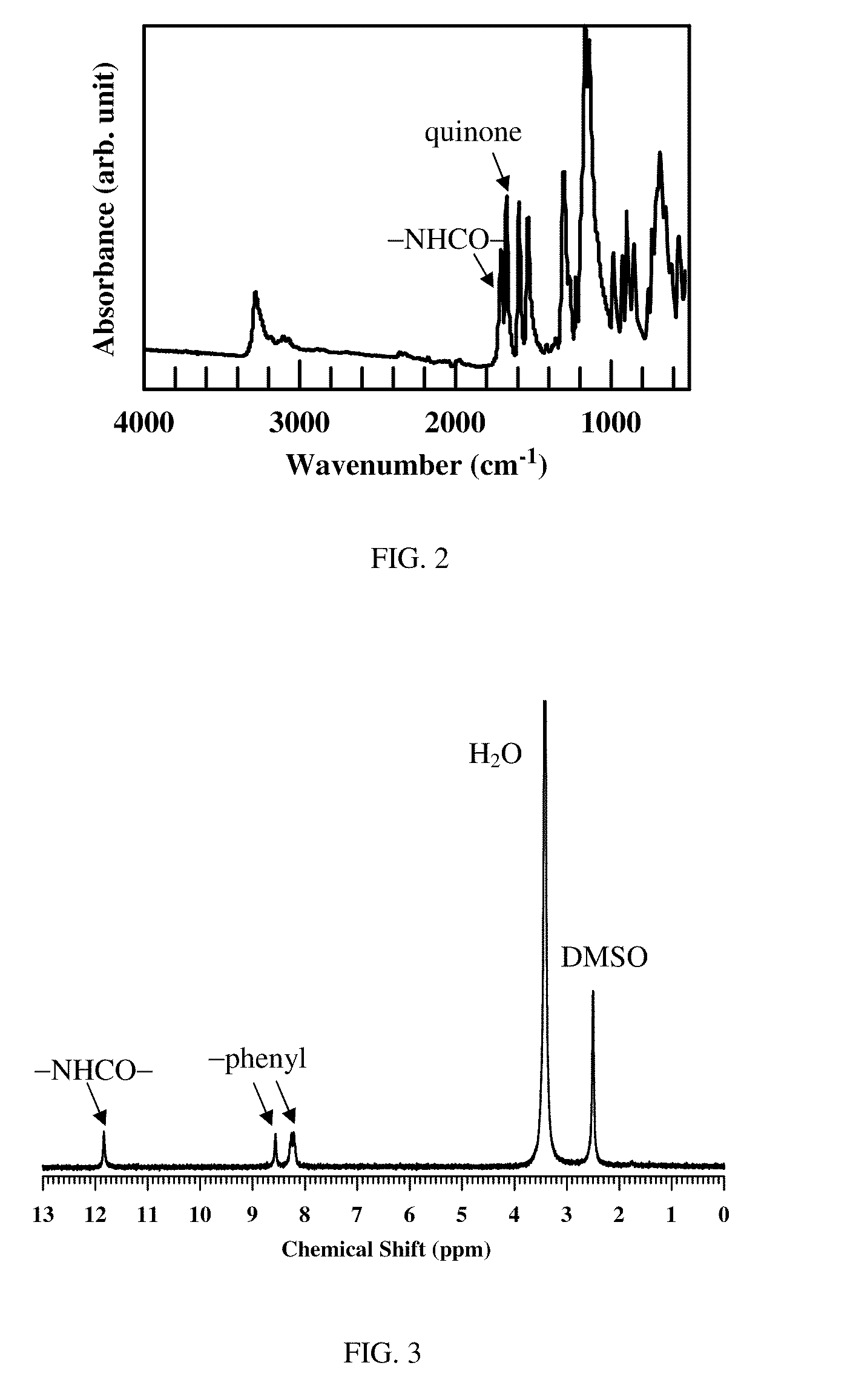Molecule-based magnetic polymers and methods
a magnetic polymer and molecule technology, applied in the field of magnetic polymers, can solve the problems of unresolved problems such as the insoluble and infusible nature of materials, the inability to solve scientific problems, and the inability to manufacture magnetic films and liquid magnets
- Summary
- Abstract
- Description
- Claims
- Application Information
AI Technical Summary
Problems solved by technology
Method used
Image
Examples
example 1
Preparation of 2,6-diazido-11,11,12,12-tetracyanoanthraquinodimethane (TCNAQ-N3)
(i) Preparation of 2,6-diamineanthraquinone trifluorodiacetate
[0055]The purpose of this reaction is to protect amino group. 2,6-diamineanthraquinone (2.4 g, 10 mmol) and sodium trifluoroacetate (4.2 g, 30 mmol) were dissolved in 50 mL anhydrous tetrahydrofuran (THF), and then 10 mL trifluoroacetic anhydride was added in portions. After that, the reaction mixture was heated to reflux in a stream of argon gas overnight. The solution was then allowed to cool down to room temperature and poured into 200 mL cold water. The precipitate was filtered and washed with water, followed by recrystallizing from ethanol three times to give 4.0 g light yellow powder. Yield: 92%. 1H NMR (8, DMSO): 8.25 (m, 4H, —CH—), 8.56 (s, 2H, —CH—), 11.88 (s, 2H, —NH—). FTIR spectrum (cm−1): 3280 (—NHCO—), 3070, 1710 (—CO—), 1670 (quinone), 1590 (phenyl). The Fourier transform infrared (FTIR) spectrum of 2,6-diamineanthraquinone trif...
example 2
Preparation of 1,1′-bis(diphenylphosphino)-3,3′-bis(trimethylsilyl)ferrocene
(i) Preparation of 1,1′-bis(trimethylsilyl)ferrocene
[0062]A solution of 62.5 mL 1.6 M butyllithium in hexane was added to ferrocene (7.6 g, 40 mmol) in 100 mL anhydrous hexane at 0° C., and then 15.2 mL N,N,N′,N′-tetramethyl-ethylenediamine (TMEDA) (100 mmol) were added dropwise. This mixture was warmed up to room temperature and stirred for 24 h. The resulting mixture was cooled to −78° C., and trimethylsilyl chloride was added slowly and stirred at this temperature for 2 h. Subsequently, the reaction mixture was allowed to warm to room temperature and stirred overnight. After the reaction was complete, the solution was poured into 200 g ice, and extracted with hexane (4×100 mL). Then, the organic layers were combined, dried over MgSO4, and concentrated under the reduced pressure. The residue was separated by silica gel flash chromatography using hexane as an eluent to give 8.6 g red liquid. Yield: 65%. 1H ...
example 3
Polymerization of Molecule-Based Magnetic Polymer P1
[0065]In a 250 mL three-neck round-bottom flask was placed equimolar amounts of monomers, 2,6-diazido-11,11,12,12-tetracyanoanthraquinodimethane (3.9 g, 10 mmol) and 1,1′-bis(diphenylphosphino)-3,3′-bis(trimethylsilyl)ferrocene (7.0 g, 10 mmol), and then 100 mL anhydrous tetrahydrofuran was added at 0° C. The reaction mixture was thoroughly deoxygenated, filled with high-purity argon gas, and then slowly warmed up to room temperature and reacted for 72 h, followed by slightly increasing the temperature to 35° C. for another 11 days. Then, the solution was precipitated in hexanes, filtered, and dried in vacuo at 60° C. to give 9.7 g brown product. Yield: 95%. In order to remove the low molecular weight fraction, gradient precipitation fractionation was employed by dissolving the polymer in THF followed by slowly adding hexane and then collecting the precipitating samples in portions. Finally, the high molecular weight fractions were...
PUM
| Property | Measurement | Unit |
|---|---|---|
| Tc | aaaaa | aaaaa |
| particle size | aaaaa | aaaaa |
| sizes | aaaaa | aaaaa |
Abstract
Description
Claims
Application Information
 Login to View More
Login to View More - R&D
- Intellectual Property
- Life Sciences
- Materials
- Tech Scout
- Unparalleled Data Quality
- Higher Quality Content
- 60% Fewer Hallucinations
Browse by: Latest US Patents, China's latest patents, Technical Efficacy Thesaurus, Application Domain, Technology Topic, Popular Technical Reports.
© 2025 PatSnap. All rights reserved.Legal|Privacy policy|Modern Slavery Act Transparency Statement|Sitemap|About US| Contact US: help@patsnap.com



